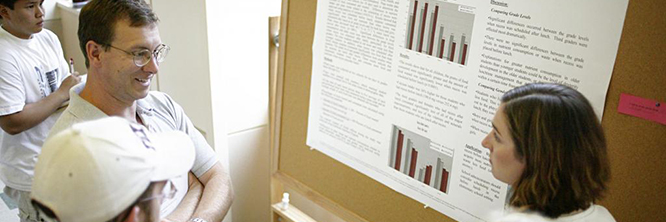Using remote sensing techniques to identify geomorphic modifications caused by landslide tsunamis
Document Type
Oral Presentation
Campus where you would like to present
Ellensburg
Event Website
https://digitalcommons.cwu.edu/source
Start Date
16-5-2021
End Date
22-5-2021
Keywords
Landslides, tsunamis, modifications
Abstract
When a large landslide falls into a deep body of water it can produce giant tsunami waves capable of causing widespread geomorphic change to landscapes. What changes occur and how long impacts from landslide tsunamis persist in the geologic record is not well understood. Landslide tsunamis often occur in relatively recently deglaciated regions, such as Alaska in the U.S. and in Greenland. In the last century four of the largest historic landslide tsunamis occurred in these regions that caused vegetation loss, reorganization of stream channel networks, and the formation of unique geomorphic features indicative of landslide tsunamis. We used remote sensing techniques to analyze satellite images and digital elevation models of sites where landslide tsunamis have occurred in the past to determine what geomorphic modifications were caused and to assess the timeframe at which modifications remain preserved in the geologic record. Our methods of event identification can be applied to other historic landslide tsunami sites and can potentially be used to identify unknown historic landslide tsunamis.
Recommended Citation
Adams, Trent, "Using remote sensing techniques to identify geomorphic modifications caused by landslide tsunamis" (2021). Symposium Of University Research and Creative Expression (SOURCE). 54.
https://digitalcommons.cwu.edu/source/2021/COTS/54
Department/Program
Geological Sciences
Additional Mentoring Department
https://cwu.studentopportunitycenter.com/using-remote-sensing-techniques-to-identify-geomorphic-modifications-caused-by-landslide-tsunamis/
Using remote sensing techniques to identify geomorphic modifications caused by landslide tsunamis
Ellensburg
When a large landslide falls into a deep body of water it can produce giant tsunami waves capable of causing widespread geomorphic change to landscapes. What changes occur and how long impacts from landslide tsunamis persist in the geologic record is not well understood. Landslide tsunamis often occur in relatively recently deglaciated regions, such as Alaska in the U.S. and in Greenland. In the last century four of the largest historic landslide tsunamis occurred in these regions that caused vegetation loss, reorganization of stream channel networks, and the formation of unique geomorphic features indicative of landslide tsunamis. We used remote sensing techniques to analyze satellite images and digital elevation models of sites where landslide tsunamis have occurred in the past to determine what geomorphic modifications were caused and to assess the timeframe at which modifications remain preserved in the geologic record. Our methods of event identification can be applied to other historic landslide tsunami sites and can potentially be used to identify unknown historic landslide tsunamis.
https://digitalcommons.cwu.edu/source/2021/COTS/54

Faculty Mentor(s)
Breanyn MacInnes, Jennifer Lipton, and Lisa Ely